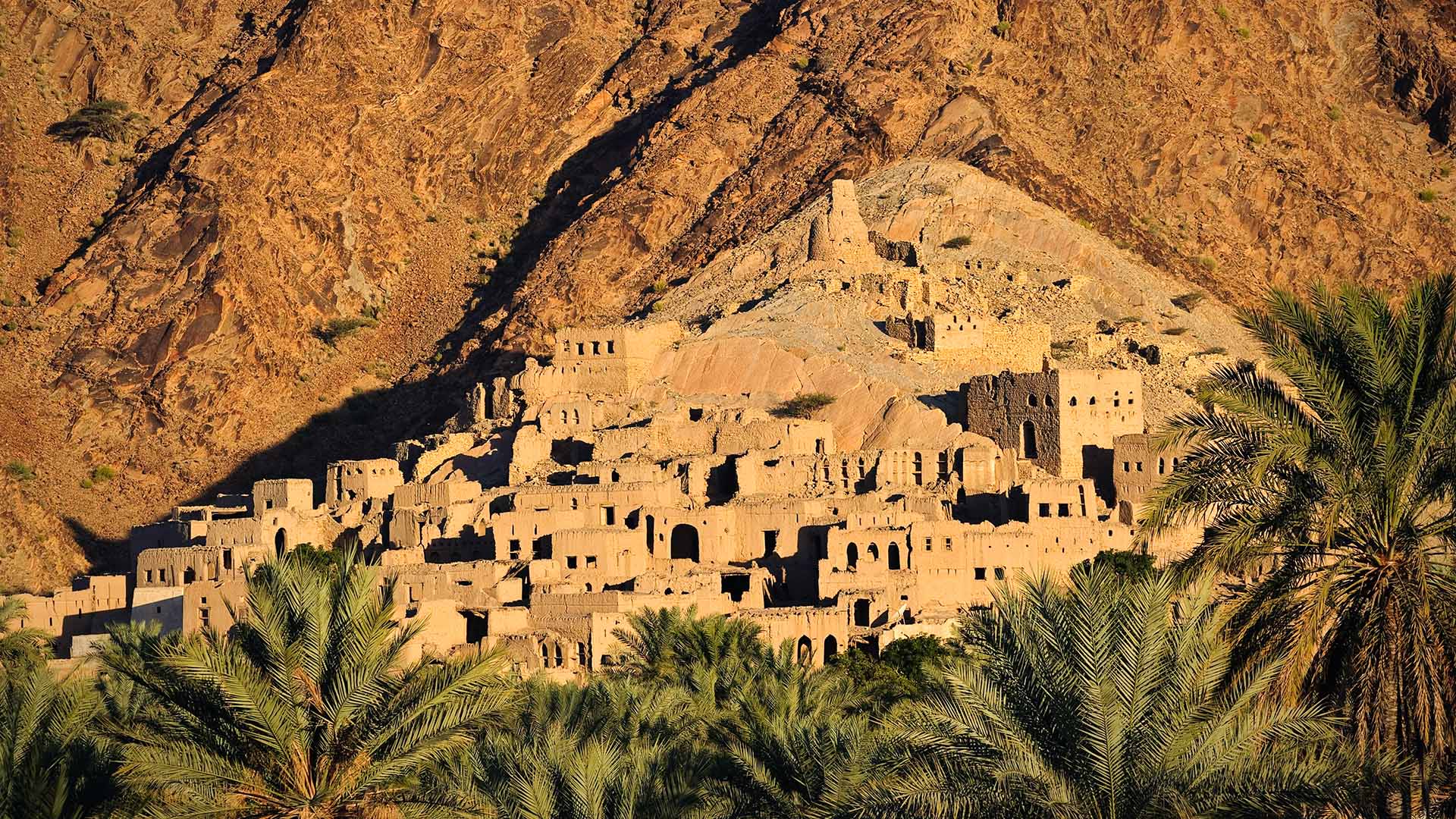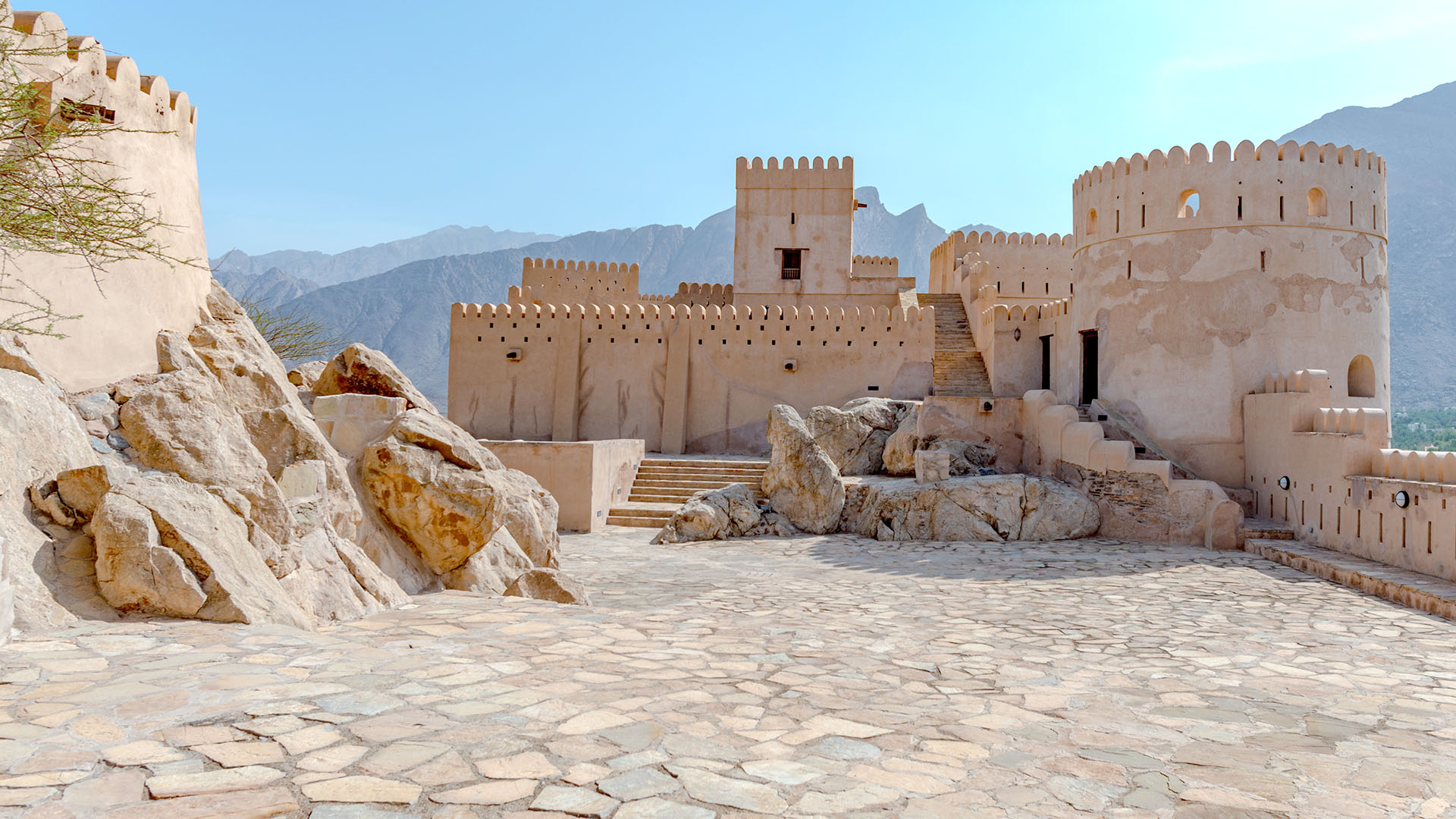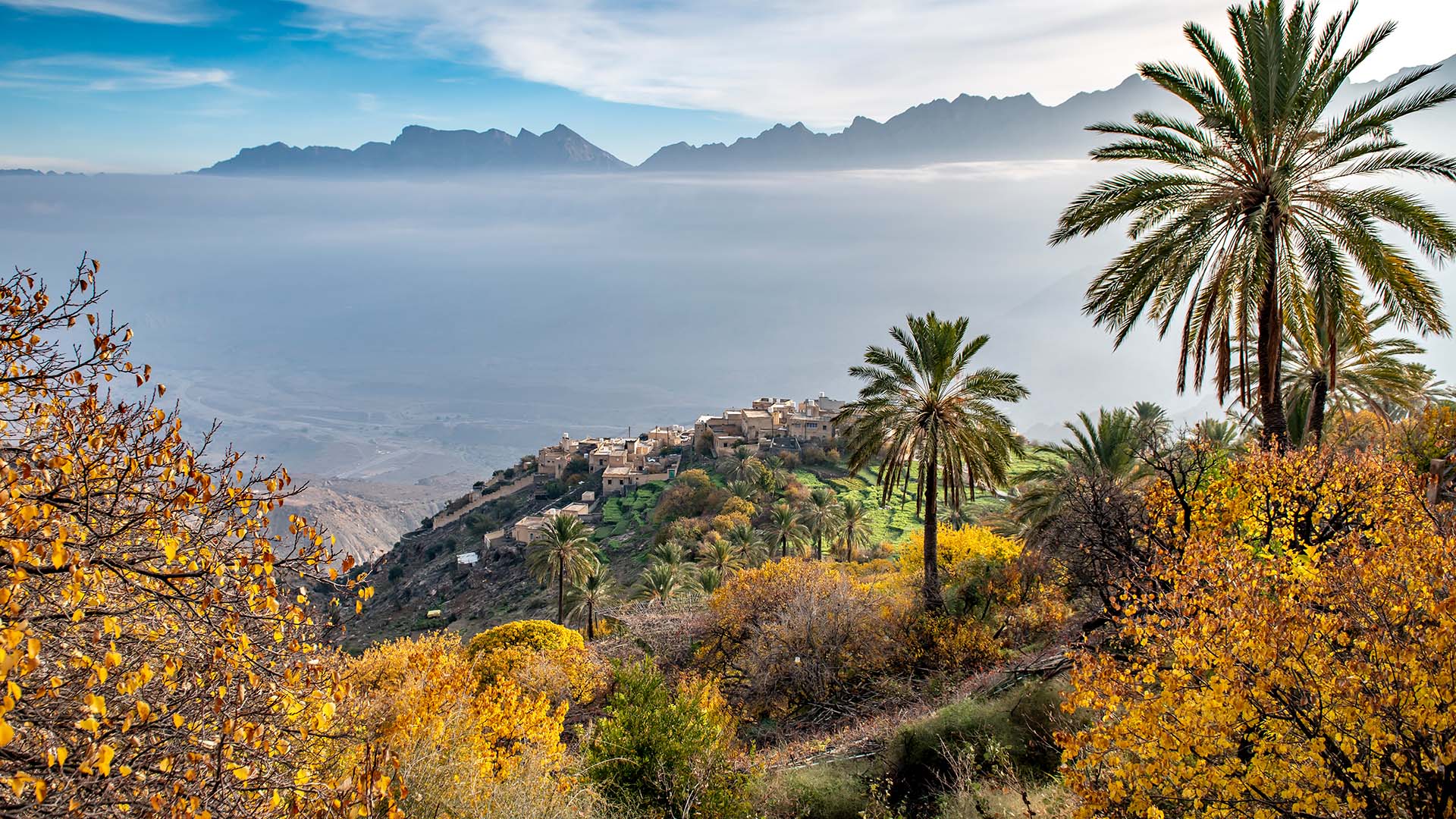Oman has no shortage of traditional, picturesque villages dotted across its remote, mountainous interior. These villages have been preserved to maintain their traditional Islamic architecture and cultural heritage, many with winding streets, carved doorways and windows, and manicured courtyards.
Here are five of the most charming fairy-tale villages that can be visited on a day trip from the capital, Muscat.
As always, check for travel guidelines and closures before planning your trip.
Wakan: Oman’s Apricot Blossom Capital
The charming village of Wakan is known for its traditional architecture and picturesque setting on a hilltop surrounded by towering mountains and narrow valleys.
The traditional mud-brick houses in Wakan feature intricately carved wooden doors and windows inspired by tribal heritage. There are also a number of traditional towers that were once used as watchtowers and granaries.
You can haggle for traditional souvenirs and handicrafts in the village’s small market, or admire the apricot blossoms on trees watered by a traditional falaj irrigation system.
Birkat al Mouz: City of 7 Towers

The ancient city of Birkat al Mouz, now tiny compared to modern towns and cities, is home to the only Roman-inspired aqueduct in Oman and seven towering towers that stand guard over the town. There are also countless date plantations scattered across the area that are well worth visiting.
Stop off at Birkat al Mouz castle. This historic fortress dates back to the 16th century and offers uninterrupted views of the surrounding mountains. You can explore the castle’s towers, courtyards and watchtowers and learn about its history at the forefront of tribal conflict in years gone by.
The nearby Al-Fateh Mosque, one of the oldest and most important in Oman, has some of the best preserved architecture and artwork in the whole country.
The town’s traditional market is the ideal place to pick up local textiles, spices and handicrafts. Don’t be afraid to haggle for the best price; locals expect it.
Harat al Yemen: The Cliffside Mountain Village
Whether you’re a history buff or an outdoor enthusiast, the historic village of Harat al Yemen, which clings to the side of a steep cliff, has a unique charm unlike anywhere else in Oman.
Wander through the winding streets, past unique mud-brick houses, each with its own unique carved wooden doors and windows.
Look out across endless beehive towers, locally known as barasti, that dot the landscape. The towers, built from mud and palm leaves, were once used to store food and as houses to shelter from Oman’s extreme weather.
Stop off at Harat Al Yemen Fort, a 17th-century lookout that offers panoramic views over the village and its wild surroundings. Go hiking in the nearby wilderness and try to spot wild ibex or hyrax grazing.
Return from your exploration to Muscat, and enjoy a meal at Ba Ban in the W Muscat.
Rustaq and Al Ulya: Oman’s Former Capital

Located in the Al Batinah region of Oman, Rustaq, the former capital of Oman, is known for its rich history, spectacular landscapes and traditional culture. The town is nestled in the remote Hajar Mountains, promising a spectacular backdrop to explore.
Spend some time visiting Rustaq Fort, a towering castle that protected the town from invading tribes for hundreds of years. Then head for the popular hot springs. The bubbling waters are believed to have healing properties.
Several traditional Omani houses are also open to visitors and offer a glimpse into the traditional way of life in Oman.
Part of wider Rustaq, the tiny village of Al Ulya is nearby. Here you can hike through Wadi Al Arbee, between mountains and date plantations, to a hidden oasis of fresh turquoise waters at the end of the Wadi Bani Khalid trail, deep in the Hajar Mountains.
If you are craving even more soothing experiences after the hot springs, return to Muscat for a bespoke treatment at the spa at Al Bustan Palace, A Ritz-Carlton Hotel.




